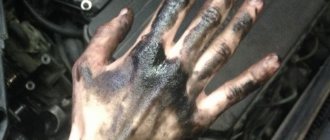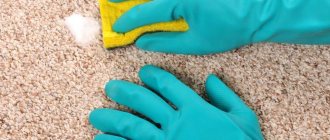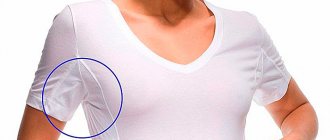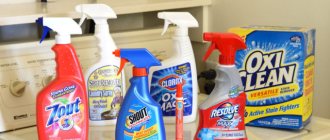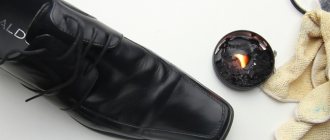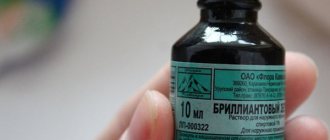Fuel oil stains on jackets and workwear are a relatively common problem. In addition, such complex contaminants may appear on other clothing and accessories. Traces of petroleum products and fuel oil have been bothering women, probably since the invention of oil-based lubricants.
Some jobs involve contaminating clothing with fuel oil or other parts of the oil industry. Trouble in the form of a stain can occur to any of us. Is it necessary to go to dry cleaning in this case? How to wash fuel oil from a jacket at home?
Fuel oil contains many types of resins and asphaltenes. They are poorly soluble in gasoline, alcohol or acetone. A rhetorical question arises: is it even possible to clean a fuel oil stain?
It is clear that during normal machine washing the fuel oil stain will not come off. To remove it you need to use a trick or some home remedies. Of course, there are no universal preparations that act on fuel oil stains, but any housewife can find several remedies in her arsenal. You can try using them to clean your favorite item.
What to do with dense products?
The first place in the list of items most often contaminated with fuel oil is shared by the overalls of car service workers and ordinary jeans. All of them are sewn from durable, dense fabrics that are quite resistant to aggressive influences. How can you remove fuel oil from clothes of this type? To clean work overalls, jeans and jackets, you can use stronger products that can also cope with old and extensive stains.
Gasoline (also kerosene, diesel fuel)
A fairly aggressive, but proven method of removing fuel oil stains of any age. The only condition is that only pure gasoline sold in hardware stores is suitable for treating contaminants. A regular one, from a gas station, will be much less effective.
Procedure:
- Place a piece of thick fabric or paper folded in several layers under the stain. A cotton swab is generously soaked in gasoline and the dirt is carefully wiped off, changing the cotton as it darkens.
- Next, the item is soaked with washing powder and stain remover, rubbed by hand and rinsed several times in warm water. Finally, wash in the machine on the “For heavily soiled items” mode.
If the clothes are very dirty, you can soak them entirely in gasoline for 30-40 minutes. Then process as described above.
Thick fabric, from which workwear is usually made, can be easily cleaned with any household chemicals. With gasoline, toluene or solvent, you can even cope with heavy fuel oil.
Toluene
The most effective, and at the same time the most toxic remedy. It is extremely rare on sale in its pure form, but is included in many paint and varnish solvents. The method of working with toluene is similar to treating fabric with gasoline.
Car shampoos
Designed specifically to combat serious stains. You can purchase them at any auto parts and accessories store. The procedure for cleaning clothes with shampoo is similar to most of those described earlier. A little product is applied to the stain, rubbed in and after 30 minutes of soaking, washed first by hand and then in a machine. At the last stage, if desired, you can add a little stain remover powder.
Acetone
A very strong solvent, which is recommended to be used only in the most extreme cases, with serious and extensive contamination. Apply in the same way as in the case of working with gasoline
It is important to remember that acetone can corrode fabrics of synthetic origin and change the color of other
Homemade cleansing paste
Starch, ammonia, turpentine and white clay together cope with complex traces of fuel oil no worse than gasoline and other aggressive agents. To prepare a cleansing paste, they are mixed in equal proportions, the paste is then applied to the problem area of clothing and left for 1-2 hours. The dried mass is cleaned off with a stiff brush, and then the item is washed as usual.
Effective means for removing machine oil from work clothes
You can treat fabric stained with fuel oil with a substance similar in structure - gasoline. Acetone or any other solvent will also work. In addition, less aggressive products are used: laundry soap, ammonia, dishwashing gel, turpentine, Antipyatin soap and others. An environmentally friendly and safe way to remove fuel oil is to use fir oil.
Removing fuel oil with gasoline
The easiest way to wash fuel oil from a jacket is with a solvent similar in composition to the substance being dissolved, i.e. petroleum product. Purified gasoline can easily remove even old stains or heavy dirt. In the latter case, it may be advisable to completely soak the item in gasoline for several hours. This method is suitable for work clothes, while a new item will most likely be irretrievably damaged. It is still better to dry clean a jacket stained with fuel oil.
Stains are removed as follows:
- the item must be turned inside out and blotting paper placed under the contaminated area;
- A piece of cotton wool should be dipped in purified gasoline and wipe the stain with it several times;
- If the stain is not removed, you can try alternately blotting the stain with purified gasoline and ammonia.
A denim jacket or something made of thick material can be generously moistened with purified gasoline on contaminated areas and left until the solvent evaporates. Afterwards, the item needs to be soaked several times in a concentrated washing solution and washed several times. After such an aggressive impact, the item may lose color, so it is better to use this method exclusively for washing old or work clothes.
Acetone or White Spirit
Stubborn stains can be removed with acetone or White Spirit solvent, but first you need to test the product on a small area of fabric, because aggressive solvents can “eat” the color. If after checking the area has become lighter, it is better to choose another method of removing the stain. In the case where the fabric has not changed in appearance, you can use White Spirit or acetone on the contaminated area
It is important to pay attention not only to the color, but also to the structure of the fibers, since acetone dissolves synthetic fibers
You can remove fuel oil from a jacket with White Spirit solvent or acetone using the same technique as with gasoline: you should treat the contaminated area several times with a cotton swab dipped in the chosen product, and then additionally soak it in a concentrated solution of laundry soap or washing powder and wash.
Dishwashing liquid
How to remove fuel oil from a jacket? Machine oil can be washed off with fat-soluble detergents, for example, high-quality dishwashing gel. “Fairy” will do; to remove the smell you will also need “Vanish” stain remover.
The soiled item must be soaked in a highly concentrated solution of dishwashing detergent or the stain should be treated directly with the gel. Clothes should be left to soak for two to four hours, and then rinsed thoroughly and washed by hand using laundry soap.
Car cleaning products
Car cleaning shampoo, which contains toluene to break down stubborn stains, can be used to remove fuel oil stains from clothing. You need to soap the fabric with the product and leave it for two to three hours. Afterwards, rinse thoroughly and wash the item as usual. As a rule, it is possible to wash fuel oil from a jacket with car shampoo.
Eucalyptus or fir oil
How to wash fuel oil from a jacket? Fir or eucalyptus essential oil is a safe and environmentally friendly way to remove machine oil stains. But, of course, such a product acts much more slowly than gasoline or special bleaches. To remove dirt, you need to actively rub the stain with a napkin or cotton sponge with a few drops of essential oil. In addition to directly removing the contamination, this method will immediately get rid of the characteristic smell of machine oil.
Tar (laundry) soap
Laundry soap is a real godsend in the fight against a wide variety of stains. The product will also help against fuel oil stains on clothes. Tar soap, which is sold in pharmacies, works in the same way. It is enough to rub the contaminated area with soap and leave for two to three hours. The procedure can be repeated several times (until the stain disappears).
Turpentine and ammonia
How to wash fuel oil from a jacket? You can try to save the stained item by rubbing the stain with a mixture of turpentine and ammonia (in equal proportions). It is better to pre-treat old stains with hot turpentine, then soda, and only then with the above composition with ammonia.
Jeans and thick workwear fabrics
Clay paste can easily remove traces of fuel oil from jeans and work clothes. To prepare it, you need to take 90 g of potato starch, 100 ml of ammonia, 100 g of turpentine and 100 g of clay. The resulting paste is applied to the stain and left for 2-3 hours. Then it is cleaned with a stiff bristled brush. After removing stains, items can be washed.
The dense fabrics from which work clothes are made are not afraid of aggressive chemicals. To clean them, you can use gasoline, kerosene, and diesel fuel. Their oily composition helps to dissolve machine oil and completely remove it. It is better to carry out processing from the wrong side of the material. After the stain is gone, it is advisable to rub the fabric with laundry soap and then wash it.
Car shampoos and food products such as margarine or butter work well on dense and coarse fabrics to remove fuel oil stains.
How can you scrub it off?
Based on the above recommendations, you can easily choose a way to get rid of such an unpleasant situation as a fuel oil stain. It is worth considering a few more important factors that will help you put your favorite things in order without much effort and at home.
With different types of fabric
It is important to remember that there is no one-size-fits-all approach to cleaning different types of fabrics. For example, to combat stains on rough denim, almost any product is suitable
If the stain is small, then an ordinary detergent can remove it without any problems, but if the stain is large, more stringent methods of dealing with it will be needed.
In the situation with jeans, it is quite acceptable to use solvents, acetone and even purified gasoline or kerosene. It is enough just to apply the selected product to the stain and leave for an hour. After this, it will be quite easy to wash it with ordinary soap or washing powder. Such products can only be used with gloves.
In the case of bologna you need to be more careful
To remove a fuel oil stain from your favorite Bolognese jacket, you can also use almost all of the above remedies, but with great care. It’s worth trying more gentle methods first so as not to damage the fabric structure.
It is extremely undesirable to apply friction to it, because intense friction causes the bologna to become very thin and can quickly break through.
In addition, it is quite difficult to see the end result on bolognese fabric, because it has the property of becoming stained and speckled at the slightest wetness, so you definitely cannot do without washing the entire product.
Here only household chemicals and patience will come to the rescue: most likely you will need several washes. You can consider washing with eucalyptus essential oil or ammonia, but even with these products you need to be extremely careful, since delicate tissues can be damaged even by such seemingly harmless substances.
From white and colored materials
It is very difficult to say which scanner is more difficult to remove fuel oil contamination from: white or colored. On the one hand, such a stain is too obvious on white fabric, but on the other hand, when cleaning colored fabrics there is a high probability of losing the color of the product. In the case of white fabric, it is quite acceptable to use high-quality bleach: if the stain is small and fresh, there is a high probability that a simple wash with bleach will be enough. In a similar situation with colored fabrics, there is a good chance of coping with a good stain remover.
In the case of colored fabric, it is very important to carry out a “test” wash - a fading test. To do this, you need to apply a small amount of the selected product to an inconspicuous area of the product: this can be the inside of a cuff or collar or any other place hidden from the eyes of strangers, and leave for a while
From the skin
In the case of leather goods and shoes, things are a little simpler. Due to its dense structure and smooth surface, the skin absorbs fuel oil much less. It is enough to promptly wipe off the fuel oil from the surface with an alcohol-based damp cloth and the problem can be avoided altogether. It is highly undesirable to wash or dry clean leather products, so it is better to minimize the possibility of such contamination.
If the stain has become ingrained and there is a need to remove it, a car interior cleaner will come to the rescue. Car shampoo is designed to combat this kind of stains; it dissolves grease well and removes the remains of burning and soot from the fuel oil.
Minimal chemical intervention may also be considered. To do this, you can try to wash off the stain with laundry soap or alcohol and paint the product with a special paint for leather: this option will not only help clean the product, but will also update its appearance.
Today there are many options for dealing with difficult stains. Long gone are the days when housewives were forced to scrub and boil laundry for a long time
Today, it is only important to choose the right household chemicals and washing machine for yourself, and you can forget about fighting stains. Laundry has become something simple, it is no longer a labor task for women, even in the case of such complex stains as fuel oil stains
In the next video you will learn about another effective remedy.
Jackets and down jackets
Jackets and down jackets are difficult to clean. Their fabric, despite its apparent density, is made of synthetic fibers and is easily damaged by aggressive agents.
Among the available substances to combat fuel oil stains on winter clothes, you should choose the following:
- fir or eucalyptus oil;
- turpentine and baking soda;
- tar or laundry soap;
- dishwashing gel.
Treatment with essential oil has proven to work best. The substance helps to liquefy fuel oil even on delicate fabrics. After removing the stain, dishwashing gel or stain remover for colored fabrics will help remove the greasy residue.
Contaminants can also be removed with car shampoo or clay-based paste, but before using these products you should check their effect on the fabric from the reverse side of the product.
Insulated workwear is made from denser synthetics, so both turpentine and acetone can be used to remove contaminants.
Home remedies for removing oil stains
Essential oils
Fir and eucalyptus oil will help in the fight against fuel oil on natural or synthetic fabrics. Soak the cotton wool in oil and scrub, often replacing the cotton wool with clean ones.
Laundry soap
72% laundry soap will help deal with fresh stains. Just rub it on the stain and leave for 20-30 minutes.
Margarine (butter)
Oddly enough, fuel oil stains can be removed from fabric using margarine or butter. You need to apply it to the contaminated area and wait a little. Then wash the product with powder or laundry soap with glycerin.
Dish detergent
Apply a little dish gel to the oil stain and rub it into the fabric with a sponge. Wait half an hour and then wash your item by hand or in the washing machine.
Gasoline (diesel)
These aggressive products can even cope with old fuel oil stains.
Using a cotton pad soaked in gasoline or diesel fuel, rub the stain from the inside of the item, first placing the clothing on a hard surface and placing a cloth or sheet of paper under the stain. Then wait 2 or 3 hours, and then be sure to wash your clothes well.
Car shampoo
Treat the stain with car shampoo or some other means for cleaning dirt in the car and wait a while.
Ammonia (ethyl) alcohol
It is quite capable of dealing with even complex stains. Apply ammonia to the area with fuel oil and wait 15-30 minutes. If the stain does not disappear or is not completely removed, the action must be repeated.
Acetone or solvents
The method is suitable for plain items made from natural fabrics. Soak cotton wool in the substance and dampen the stain. Acetone can ruin delicate and colored fabrics, so don't risk it. It is safest to test the effect on an inconspicuous part of your product. It is recommended to carry out manipulations with these odorous substances in a ventilated area.
Ammonia and turpentine
Mix these two substances and rub the stain. You can apply heated turpentine to an old trace of fuel oil and sprinkle soda on top.
Caustic soda with laundry soap
A mixture of these two substances will help quickly remove fuel oil stains. Mix grated laundry soap with caustic soda in equal proportions, add warm water until liquid sour cream becomes thick. Apply the solution to the dirty mark and wait 20 minutes.
Tar soap and dish soap
The method will allow you to remove fuel oil from thin and delicate fabrics. First you need to soak the soiled item with dish gel for several hours. Then rub the fuel oil stain with tar soap.
Soap and gasoline
This method will help remove oil stains from dense materials, such as a denim jacket. Rub the dirty area with gasoline and then soak the jacket in a soapy solution made from laundry soap shavings.
We tried to tell you how to effectively remove fuel oil from a jacket, synthetic or natural clothing. We will be glad if our advice will help keep your things clean.
Car shampoo
Car shampoo carefully cleans the fabric from machine oil without damaging it. You can purchase the product at any auto parts store.
If the mark has already dried, you will first have to soften it with margarine or butter. Then apply car shampoo in a small amount and gently rub it into the fabric. The clothes are left in this state for 30-40 minutes. Then it is washed in an automatic machine or by hand.
Removing oily stains on clothes
Machine oil stains on denim can be wiped off yourself at home. There are many ways to solve this problem. However, it should be understood that any cleaner can ruin clothes and make them unusable. Therefore, before using the product on the product, check the reaction of the material to the cleaner. Apply a small amount to the inside of clothing. If the fabric structure is not damaged, use a stain remover. To remove oily marks from denim trousers, try using the following products: gasoline, kerosene, acetone, starch, ammonia and turpentine.
You can wipe off the fuel oil from the shirt with household or turpentine oil.
Try cleaning your jacket or down jacket with essential oil, car shampoo and dish detergent.
After the cleaning procedure using chemicals, do not forget to ventilate the room for thirty minutes. When using gasoline, kerosene and other flammable cleaners, perform the washing procedure away from fire.
Avoiding machine oil stains is easier than cleaning them. Therefore, watch your clothes and try to protect them from getting various solutions on the fabric. If the appearance of an oil stain cannot be avoided, begin the cleaning procedure immediately.
Caustic soda
Effective but toxic. It should only be used when washing thick fabrics, observing safety precautions. Clothes made of silk and wool cannot be treated with caustic soda.
The first way to remove a stain is to apply baking soda to the stain for 20 minutes. Then the item is washed.
In the second case, soda is diluted in water (2 tablespoons per liter), and the clothes are soaked in the resulting solution for 2 hours. After processing, the item is washed.
Instead of caustic soda, you can try a gas stove cleaner.
You are acting against common sense
Some people, when faced with problems, are embarrassed to ask for advice and help from more experienced and sophisticated comrades. They try to hide their inexperience, lack of knowledge or weakness through stubbornness or by doing stupid, thoughtless things. At the same time, such people do not understand that with their closeness, embarrassment and reluctance to ask for help, they are only making things worse for themselves. Don't be ashamed of your weaknesses! You cannot know and be able to do absolutely everything, and therefore there is nothing shameful in your ignorance and inability. If you have a desire to learn and achieve new heights in order to overcome obstacle after obstacle, the Universe will help you with this!
How to remove fuel oil from outerwear
A coat or sheepskin coat can be cleaned of fuel oil using aviation gasoline, ammonia, solvent, and caustic soda. You can also use car shampoo or products that are sold in auto supply stores, for example “AXEL” - a professional remedy for grease and oil stains.
You can remove fuel oil from a jacket, gloves, hat or shoes as follows:
- Grind ordinary chalk, if it is not available, use lime;
- Sprinkle the powder onto the stain and rub thoroughly with a brush;
- After a day, remove the chalk and wipe the area with a cotton swab dipped in glycerin.
From socks
To remove fuel oil stains from socks, you should purchase fir oil. They moisten a thick piece of fabric with it and place it inside the sock, on the wrong side of the stain. Then they wet another piece of cloth and begin to carefully process the fuel oil with it. As a result, the stain should come off onto a piece of fabric from below, which can be additionally moistened with oil several times during the processing process.
So, you can see that removing fuel oil stains from clothes at home is quite easy if you use the right product. As a last resort, if none of the methods help you, you always have the option of dry cleaning, where professionals will quickly and effectively remove stains, dry and iron your clothes.
How to remove an old fuel oil stain on a jacket:
First of all, it is necessary to soften the area of contamination. To do this, use caustic soda, acetone, white spirit, as well as specialized removers.
It is important to limit the area of exposure to the active substance to the stain only, so as not to damage the surrounding tissue.
After the jacket has been cleaned of traces of fuel oil, you should carry out a regular wash, and if the measures taken were not enough, then resort to more aggressive methods of attacking the stain.
Conclusions and video
Cleaning clothes from fuel oil stains is not an easy task, but it can be solved. And the sooner you do this, the more effective the result will be. If you can’t get rid of the dirt yourself, then it’s better to resort to dry cleaning services. But when you happen to stain a sheepskin coat, a fur coat or a coat, or clothes made from very delicate fabrics, you should use the services of professionals immediately.
You can wash fuel oil with products that have properties that affect the dissolution of resins and oils. Such substances include ordinary acetone, ammonia, aviation gasoline, baking soda, and turpentine.
Before using a particular substance, it is necessary to determine its effect on a specific tissue. To do this, you need to know that cotton or wool will not withstand the effects of alkali. Artificial viscose or velor will not withstand contact with acids.
Alkaline agents include gasoline and acetone. Acids include ammonia and turpentine. Before using any substance, it is good to realize how deeply the fuel oil has penetrated into the clothing. Depending on the degree of contamination, select an action:
- place the entire thing in the solution;
- Moisten the item only partially with the desired product.
To prevent stains from appearing on clothing, it is better to place a piece of clean fabric under it. Apply the product to the stain carefully. After the cleaning procedure, the item should be washed well. Stain powder and fabric softener will work for best results.
How to remove fuel oil stains from a jacket or down jacket
It will not be possible to completely remove fuel oil stains from outerwear without pre-treatment. Hand and machine wash detergents are not designed to combat the oily residue left by petroleum products. It is necessary to carry out preliminary cleaning, remove fuel oil stains, and then wash the item completely to remove dirt and unpleasant odors.
Selecting a detergent
For washing down jackets and down jackets, it is recommended to use liquid gels, which have good washing properties, but do not get clogged between the fibers of the fabric and are easy to rinse. To give a pleasant aroma and softness to outerwear after removing traces of fuel oil from it, you should use fabric conditioners and fabric softeners.
Difficult types of stains should be removed as soon as possible. Fresh traces of fuel oil can be removed from a jacket using folk remedies or gentle household stain removers. In order to wipe off an old stain, you will have to make a lot of effort. The best way to avoid damage to things is to be careful, wear work clothes and know cleaning methods.
Features of stain removal depending on the type of material
Before you wash old fuel oil from a jacket, you should determine the composition of the material from which it is made, since the fabric reacts differently to cleaning agents.
In addition to this rule, there are other general recommendations for cleaning fuel oil blots:
- It is advisable to wash the stain immediately, before it dries. Otherwise, dirt penetrates into the deep layers of the fibers, making it difficult to remove them.
- When cleaning, only clean materials are used - a scarf, a cotton pad, a napkin. Otherwise, you risk staining the fabric with other types of stains.
- The fuel oil is cleaned with short movements in the direction from the edges to the center to prevent an increase in the area of contamination.
- When using chemicals, it is advisable to first try on an inconspicuous area of the jacket to check the fabric's reaction to the product.
- It is not recommended to use several cleaning methods at once. It is unknown what the reaction of the various ingredients will be to each other.
- The area with the stain should be placed on a flat, hard surface, and a paper towel should be placed under it, so that during the procedure the dirt does not spread even wider.
- Do not machine wash items until most of the stain has been removed.
- Before trying methods for removing stains that are effective but dangerous for certain types of fabric, it is recommended to use home remedies (soda, salt, dishwashing gels).
How to Clean Fresh Stains
If the problem was discovered as soon as possible after its appearance, then the chances of wiping off the fuel and lubricants without a trace are quite high.
Algorithm for removing a recently appeared speck:
- First, blot the stained area with any absorbent material, such as a paper napkin or towel, or a dry, clean cloth. You need to do this several times to absorb the maximum amount of moisture.
- The next step is to clean off any remaining stains. To do this, it is necessary to use bulk products that also have good absorbent properties. These include fine salt, starch or powder. To remove a blot, you just need to generously distribute one of these substances over the dirty area, and then let the moisture absorb for about 20-30 minutes.
- If this method does not help, then you should pour the above solution with dishwashing liquid on top, and then rub it a little with your fingers to form a paste.
- After 30 minutes, remove excess product with a toothbrush and then rinse under running water.
- After this, you can wash the jacket in a machine using regular powder.
Tip: before washing, to achieve the best effect, you should soak the item in warm water with the addition of detergent.
Fighting old stains
There is an opinion that old contaminants that have managed to penetrate deeply into the fibers of the material cannot be cleaned. But that's not true. There are many options for removing even stubborn fuel oil that are quite effective and inexpensive.
Most often, various types of solvents are used for such purposes. They do their job well, but, unfortunately, they have a sharp, specific odor that is not so easy to remove.
Washing in a machine or by hand after careful treatment with similar products is required. At the end of all procedures, long-term ventilation is required to eliminate the unpleasant odor.
Useful tips. What is the easiest way to remove fuel oil from clothes?
Taking into account the fact that fuel oil stains are difficult to remove, you must always be prepared for the fact that even after using all the methods, the stains will remain. For better results, some rules will help you.
- Before using your solution on clothing, test it on a small area of similar fabric.
- You need to be very careful when using acetone to clean any fabrics.
- The cleaning solution should be applied from the edge of the stain to the center. This will help avoid streaks on the fabric.
- If solvents are used for cleaning, use rubber gloves to apply them.
- To avoid leaving an outline of the stain on the fabric, apply the solvent, touching a little on the area near the stain.
- If gasoline or alcohol is used to remove fuel oil stains, you need to dry the treated item as far as possible from open fire.
- To prevent the fuel oil stain from remaining on another part of the clothing, a clean, dense cloth should be placed under it.
- If all the above procedures did not help, and the stain still does not come out, it is better to take the clothes to the dry cleaner.
There, specialists use special products that are not widely available. Professional equipment is also used to remove stains. Dry cleaning will return your clothes to their original appearance.
Cleaning denim
The structure of jeans is very strong; when fuel oil comes into contact with the material, the compound is firmly and deeply eaten into the fibers. To clean the fuel oil and return your jeans to their original appearance, take note of a simple cleaning method:
- prepare an effective mixture containing turpentine, ammonia and starch in equal proportions. Add starch last as the mixture thickens. The consistency should resemble a paste, then it will be easier to apply;
- Apply the resulting mass in a thin layer to the affected area, leave the product to act for 10-15 minutes so that it is better absorbed into the rough denim material;
- after the time has passed, dilute vinegar in cool water (for 1 liter, 5 tablespoons of 9% vinegar), soak a cloth in it and remove the remaining mushy mass from the jeans;
- wash the product in warm water with added powder.
In case of severe contamination, the method with ammonia and turpentine is unlikely to help; all that remains is to remove the stain using white spirit or acetone.
https://youtube.com/watch?v=-K3iOKJZoCg
Application of special compounds
To remove stains left by fuel oil, only serious, targeted stain removers capable of dissolving petroleum products should be used.
Dr.Beckmann Lubricant and bitumen
Concentrated stain remover is available in small 50 ml containers. The drug is suitable for removing stubborn stains left by:
- machine oil,
- lubricant,
- bitumen.
The product has been tested by dermatologists and can be used to tidy up not only adult, but also children's clothing. The stain remover is suitable for white and colored fabrics. The drug is applied to the stained area and left until the stain dissolves and its particles separate. After this, the item is cleaned and washed.
The price at points of sale is mainly up to 200 rubles. Read reviews here and here.
Duty oil
The product is intended to remove stains from lubricants and various technical fluids, including fuel oil. At its core, it is a low-foam, alkali-based detergent with a disinfecting effect. A product for removing technical oils is produced in the Russian Federation. Price for 5 liters – from 1000 rubles.
Pro-Brite Axel-6 Oil & Grease Remover
The product in spray form is intended to remove marks from industrial oils from textiles and hard surfaces. It is convenient to spray the stain remover onto the area with the stain and treat it with a brush or napkin. The product can also be used for greasy stains of plant and animal origin. The average price is up to 350 rubles.
